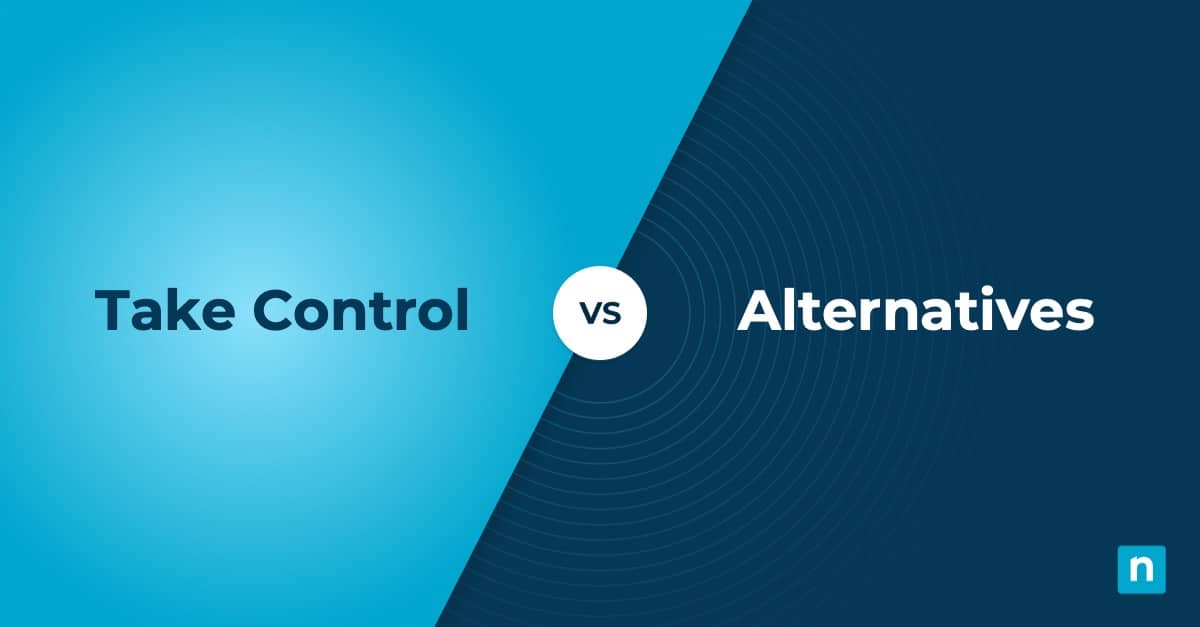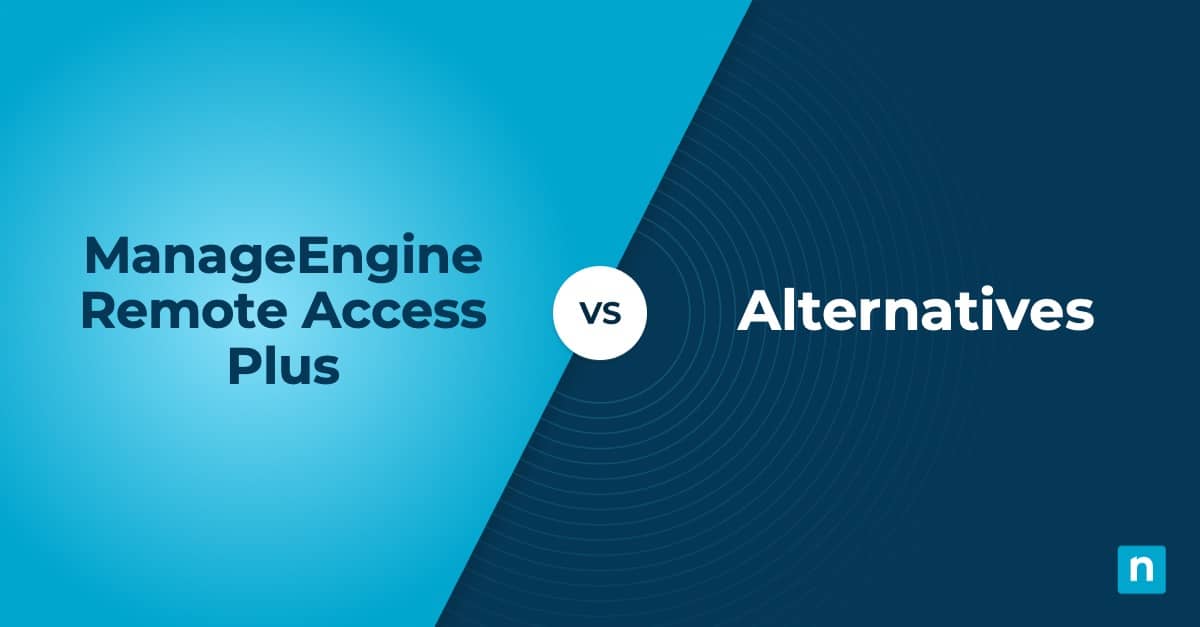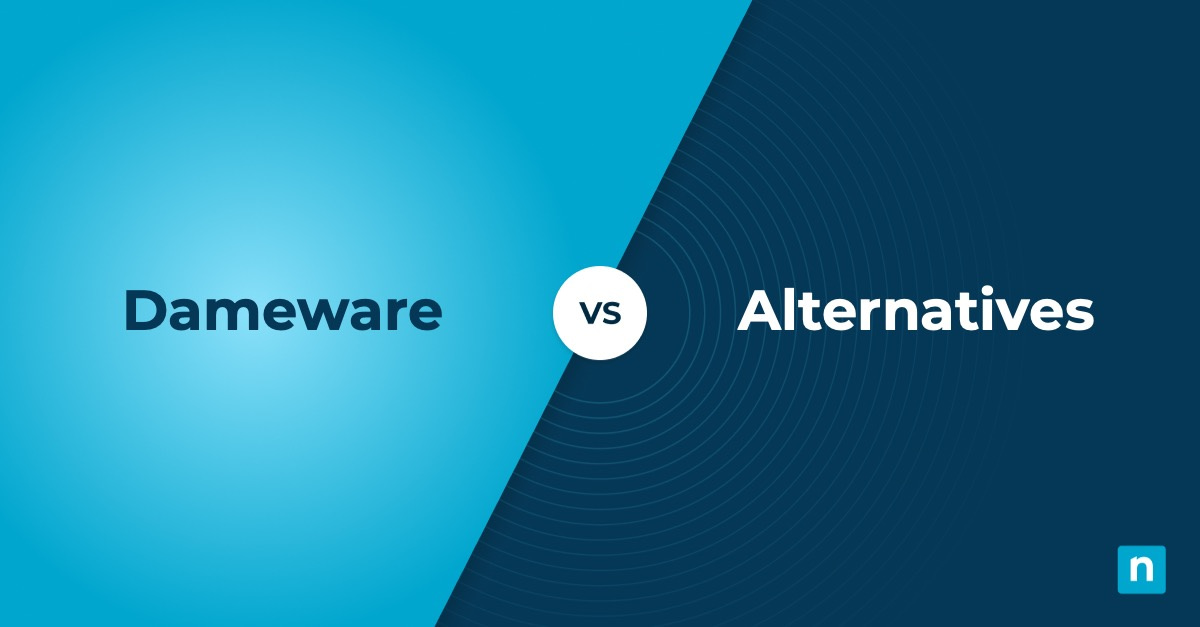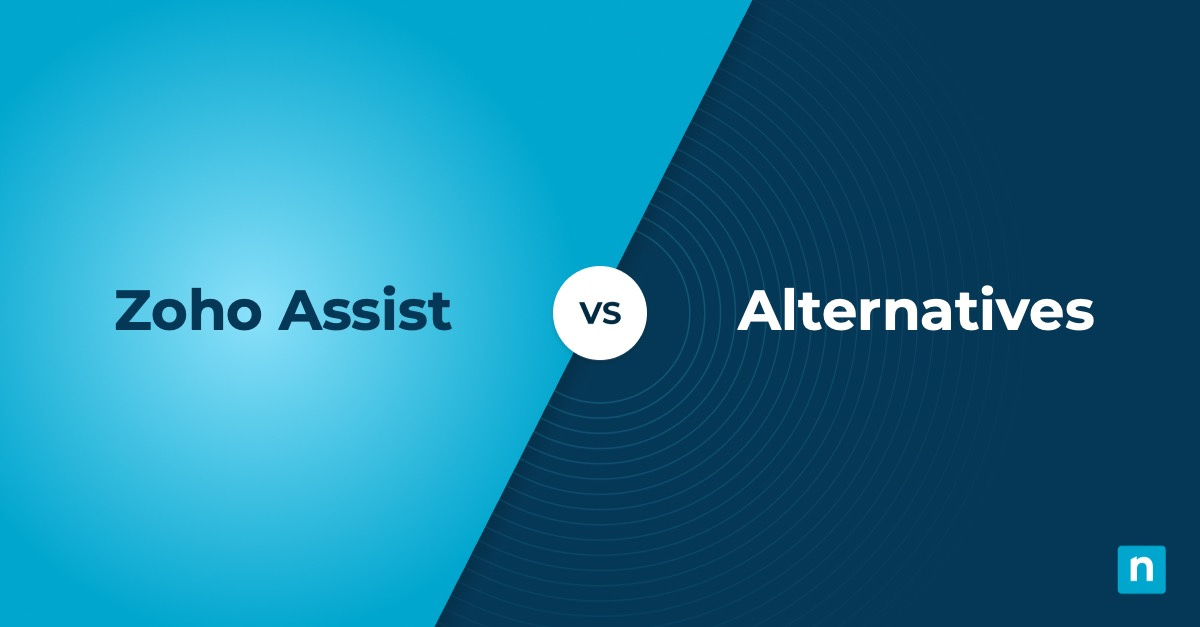Data loss or theft can easily destroy a business, but thanks to data backup and recovery solutions, IT teams can rest easy knowing that their data is secure and protected.
No data backup recovery plan is complete without the right software. There are numerous data backup and recovery solutions on the market; however, businesses don’t trust just any software solution or provider to access and shield their precious data. They want top-of-the-line tools to keep their information safe. And we have gathered top-of-the-line tools here for you: a list of the best data backup and recovery software for businesses in 2024.
See how NinjaOne stacks up against the competition in the ESG Economic Validation Report—proof you can count on. Read now.
Why is data backup and recovery important?
The U.S. Government Accountability Office (GAO) emphasized the importance of data backup in its latest cybersecurity report. They stated that “nearly all federal and nonfederal operations, including the nation’s critical infrastructure, are supported by (computer-based information systems and electronic data),” necessitating critical cyberinfrastructures for all businesses.
This has led to considerable effort by various government agencies, including the NIST Computer Security Resource Center (CSRC), to create comprehensive guidelines for protecting sensitive data.
One of the most fundamental aspects of data management is data backup and recovery. The NIST and NCCoE even released a ransomware protection guide, strongly encouraging MSPs to create data backup recovery plans to mitigate the effects of data loss events
7 qualities to look for in data backup and recovery software
In general, seven qualities determine great software. But since we’re talking specifically about data backup and recovery tools, we discussed how these qualities must also be found in any backup platform you eventually decide on.
| Quality | Description | How that applies to data backup and recovery software |
| User experience (UX) | Arguably the most important quality of any software, user experience describes a person’s overall feeling when using the platform. This includes loading time and how visually appealing the software is. Take note that 40% of people will leave a site if it takes more than three seconds to load, and 32% of customers will leave a brand (even one they loved) after just one bad experience (Baymard Institute). | Data backup and recovery, as its name suggests, is not used regularly under the presumption that you’ll only use it “when you need to”. However, more and more IT experts recommend regularly backing up data (it would be better if you can automate this procedure) so that in the event of a ransomware attack, your IT team has fail-safes in place to minimize any organizational impact. |
| Availability | Availability measures the probability that a system is operational. In other words, how often does the software work? If software crashes regularly or is inaccessible for whatever reason, it will rate poorly for availability. | Ideally, you shouldn’t be using your data recovery tool a lot. Nevertheless, it is important that when you need to, your backup and recovery software works efficiently and effectively. |
| Performance | As its name suggests, performance determines how effective the software is compared to the expected workload, estimated IT budget, and other variables. | This works hand-in-hand with availability. It is important that your data backup and recovery tool can successfully handle backing up data when it needs to. |
| Scalability | Good software remains functional and efficient even as it handles more processes. If you’re an MSP, MSSP, or IT enterprise, you must consider software proven to remain fast and reliable even as you grow. | As your company grows, it is likely that you will have large amounts of data to backup and recover. Make sure that you work with a software vendor that is known to remain fast and reliable, even when managing heavier backup loads. |
| Adaptability | Software adaptability describes the ease with which it can adapt to changing requirements. Given the ever-evolving IT landscape, this is particularly important in data backup and recovery tools. | Unlike other types of software, data backup and recovery tools are not often changed or modified. That said, it’s still worth considering how well your desired tool can adapt to your business needs. |
| Security | It is vital that your software can mitigate threats, such as ransomware. This includes implementing authentication protocols, such as MFA, and complying with various regulations like SOC. | Look for a data backup software vendor that has a proven track record of safeguarding data and their endpoints. Companies that integrate with antivirus software, like NinjaOne, are also worth considering. |
| Economy | This measures the total cost of ownership of the software and includes how much you spend on it during deployment and maintenance. Ideally, your software should offer a decent ROI compared to the other six qualities. | Your data backup and recovery platform should not cost you an arm and a leg to manage. Find software that is not only efficient to manage, but contributes to your overall bottom line. |
Windows vs. Mac backup and recovery software
You may wonder if there is a difference between Windows backup and recovery and Mac backup and recovery, aside from the obvious distinction of the type of devices they manage.
While all types of backup software perform essential tasks, they usually differ in ease of use and the amount of data that can be stored in the cloud or on-premises.
This is where it can get tricky: Some users have stated that Windows backup software is generally slower and more prone to glitches than Mac backup and recovery software. However, some groups state the opposite and claim Mac software is less reliable than its Windows counterpart.
Ultimately, it seems to boil down to personal choice. It’s worth noting that all vendors offer the same core functions but shine in specific areas—including device type management. This point is worth emphasizing: Always look at the type of devices your intended vendor can back up. To mitigate risks, it is best to find a solution that can backup multiple devices across several operating systems.
8 best data backup and recovery software (2024)
1) Best for overall use: NinjaOne
NinjaOne backup, which is built into its trusted endpoint management dashboard, protects your data, helps you recover it faster after a ransomware attack, and allows you to remain compliant with various regulations like GDPR, PCI-DSS, and HIPAA. Its powerful tool delivers flexible and customizable backup plans to fit any business need and IT budget.
Additionally, because NinjaOne backup is provided as an add-on to its endpoint management solution, you experience a more holistic and comprehensive approach to managing and safeguarding your endpoints, even as you scale.
Backs up what types of devices: Windows and Mac workloads
Key features
- Cloud-only, local, and hybrid storage options
- Centralized management through single pane of glass
- Chainless incremental image backups
- Several restore options with revokable authorization keys
- Self-service file restore
- Proactive reporting
- Built-in remediation tools
- SOC 2 compliant
Customer story
Steve Park, IT manager at Snyder Langston, was looking for a backup solution for its mostly remote workforce. After trying another vendor, he switched to NinjaOne and was able to remotely manage and backup his team’s Windows and Mac endpoints in a single dashboard.
“We needed something cloud-based that could account for the 70% of our remote workforce,” said Park. “NinjaOne Backup is ‘set and forget’ while being easy to use. It’s critical for our lean IT department to easily back up endpoints for remote workers and executives and helps us be more efficient with our time.”
Read more NinjaOne customer stories or check out NinjaOne reviews.
2) Best for cost: Veeam
Veeam’s Backup and Replication software offers continuous data protection, image-based backups with unlimited capacity, and fast and efficient recoveries. It provides excellent value for the price, and according to Peerspot, “It is cost-effective. A lot of times, people pick Veeam because of its price.”
Veeam’s Data Platform is built on data security, recovery, and freedom principles. It includes a malware detection engine that detects threats proactively remediate them, and avoid reinfection by pinpointing ransomware strands and blocking re-entry.
Backs up what types of devices: Windows and Mac workloads
Key features
- Threat detection
- Proactive threat hunting
- Content analysis that prevents any reintroduction of malware
- AI-powered assistance
- Zero-trust architecture
| Use cases | Shortcomings |
|
|
3) Best for MSPs: Axcient
Axcient x360Recover is a robust business continuity and disaster recovery (BCDR) solution designed exclusively for MSPs. The platform covers most modern backup and recovery use cases, including appliances, servers, and cloud-to-cloud. It can be delivered and deployed either direct-to-cloud or appliance-based deployment.
Axcient is also known for its proprietary chain-free backup technology, which eliminates the inefficiencies of chain management. With Axcient, users can store data in its native virtualizable state and restore it without any integrity issues.
Backs up what types of devices: Azure, Linux, Microsoft 365
Key features
- Multi-tenant management
- Automated reporting
- Chain-free backups
- Microsoft 365 backups
- Point-in-time restorations
| Use cases | Shortcomings |
|
|
4) Best for small businesses: Acronis Cyber Protect Cloud
Acronis Cyber Protect Cloud is a next-generation, AI-based anti-malware, antivirus, and endpoint management tool in one solution. It is most beneficial for small IT businesses or professionals looking for a personal backup solution because it offers full-image and file-level backup and recovery for workloads on over 20 platforms.
Acronis is also quite useful for companies with a limited IT budget. As mentioned, its platform integrates data protection, cybersecurity, and endpoint management in a single tool – making it more cost-efficient for business leaders who need a singular solution with adequate functionality.
Backs up what types of devices: Windows and Mac workloads
Key features
- Centralized management
- Automation
- Disaster recovery
- Email security
- Cybersecurity
| Use cases | Shortcomings |
|
|
5) Best for a mid-market IT company: Druva Data Security Cloud
Druva is a 100% SaaS, fully managed cloud platform that secures and recovers data from any threat. It is suitable for hybrid environments as it ensures secure and clean recovery through air-gapped immutable backups, as well as advanced anomaly detection.
Because its platform is entirely on the cloud, it requires no hardware, software, or appliances to deploy. Instead, IT leaders can easily manage their networks from a single console and experience a scalable solution powered by Amazon Web Services.
Backs up what types of devices: Windows and Mac workloads
Key features
- Autonomous protection
- Rapid response
- Guaranteed recovery
- Cyber response
- Discovery and compliance
| Use cases | Shortcomings |
|
|
6) Best for large enterprises: Rubrik
Large enterprises often choose Rubrik as their data backup and recovery solution because of its cyber readiness and incident response. Rubrik offers its Cyber Recovery Simulation as part of its Data Security Posture and Threat Containment solutions to validate the effectiveness of cyber recovery plans for data loss events.
This allows for more proactive monitoring and measurement of outcomes, such as execution time. Combined with the Rubrik Security Cloud, business leaders can protect their data, monitor data risk, and recover data and applications to maintain operational efficiency.
Backs up what types of devices: Windows and Mac workloads
Key features
- Zero trust principles
- Global policy-driven automation
- Data risk assessment and anomaly detection
- Continuous monitoring for data risks
- Protect data from cyberattacks
| Use cases | Shortcomings |
|
|
7) Best for reliability: Datto Backupify
Datto Backupify is known for its reliability, unlimited cloud storage, fast recovery, and granular data restoration. It provides automated backup for Google Workspace and Microsoft 365. Additionally, it boasts 10+ years of cloud-to-cloud backup innovation and a record of consistent performance.
Many IT business leaders use Backupify for its wide range of automated features and specific ransomware protection tools for G Suite and Office 365 data.
Backs up what types of devices: Google workspace, Microsoft 365
Key features
- Granular restorations
- Point-in-time backups
- SOC 2 Compliant
- Automated, unlimited cloud storage
- Consistent performance
| Use cases | Shortcomings |
|
|
8) Best for ease of management: Cove Data Protection
Cove Data Protection by N-Able is a cloud-first data-as-a-service tool. Business leaders use its platform for its ease of management and efficiency in backing up various images. It also offers recovery services for servers, workstations, and Microsoft 365 from a multi-tenant web-based dashboard.
Cove markets its incremental backups as significantly smaller than traditional image backup products, making it suitable for mid-market to larger enterprises with extensive backup requirements.
Backs up what types of devices: Mac, Microsoft 365, and Azure workloads
Key features
- Disaster recovery
- Full image recovery and virtualization
- Automated recovery testing
- File-level restore
- Standby image for fast failover
| Use cases | Shortcomings |
|
|
Tips for choosing the best data backup and recovery software
Out of all these data backup and recovery software options, how do organizations choose one? When searching through backup and recovery software options, organizations follow these tips:
Check the company’s reputation
Even if the data backup and recovery provider you are considering is well-known, always check the company’s reputation and reviews. There are many ways to use peer-review websites for software to gather additional information about a provider and its services.
Note the backup & recovery capabilities
When comparing two similar software solutions, note their backup and recovery capabilities, specifically the features that will benefit your organization. Some examples of backup and recovery features to look for include disaster recovery plans, RTO and RPO, backup frequency, and granularity of restored data.
Ensure compatibility with current systems
Unless your IT team plans to alter all their current systems, ensure that the data backup and recovery software that you select is compatible with your IT environment. Your new software solution should solve problems, not create them due to compatibility issues.
Verify the scalability of the solution
If you are a growing MSP or IT team, purchase a software solution that offers multiple scalability options. This way, the software can grow with your company during times of success, and you can also revert it back if needed.
Request on-site, remote, or hybrid support
“74% of U.S. companies are using or plan to implement a permanent hybrid work model,” Zippia reports. The backup and recovery provider you partner with should provide their services and support for the business model you follow, including on-site, remote, or hybrid environments.
Protect and secure your data with NinjaOne Backup
NinjaOne is a trusted endpoint management company that helps drive radical efficiency for MSPs and IT enterprises with its all-in-one tool that includes managing endpoints and backing up and recovering data. 17,000+ clients worldwide use NinjaOne to protect their data, remain compliant, and recover faster with a tool that does more for less.
If you’re ready, request a free quote, sign up for a 14-day free trial, or watch a demo.








